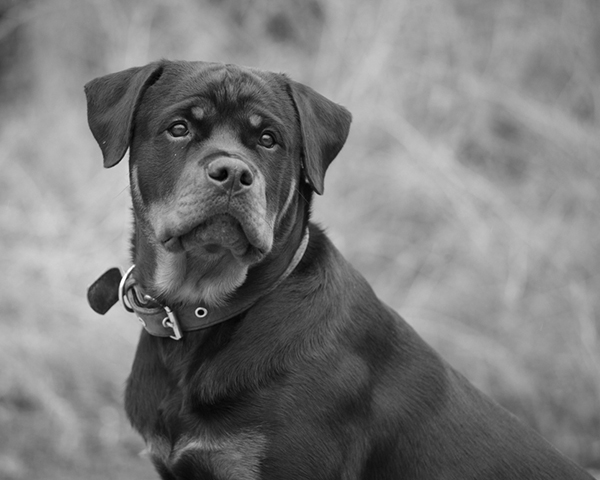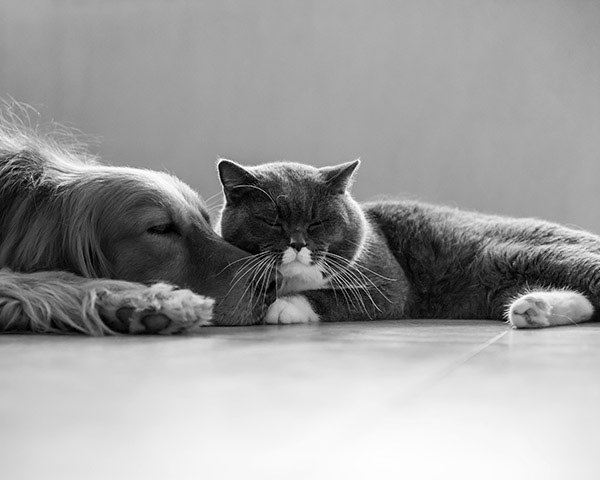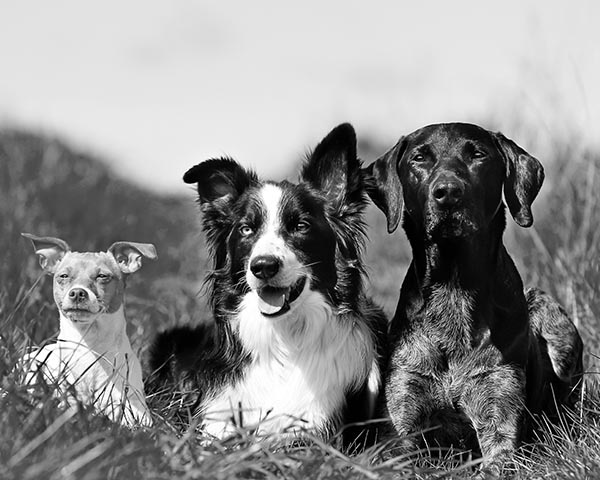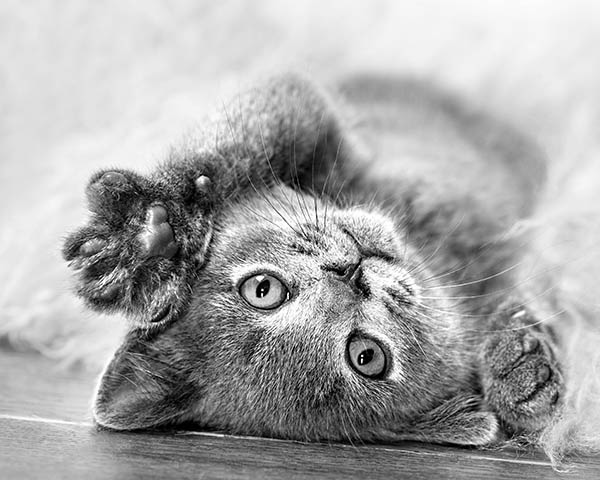Rottweiler dog breed information and advice
Are you wondering if a Rottweiler is the right dog for you? This dog breed guide is full of information to help you decide. We’ll cover everything from Rottweiler facts to Rottweiler traits and training.
As a large and powerful dog, it’s best to do your research before you decide if a Rottweiler is suitable for your home and lifestyle. Read on to find out more.
Rottweiler facts

| Lifespan | 8 - 10 years |
| How much | £600 - £1,500 |
| Size | 58 - 69 cm |
| Weight | 34 - 60 kg |
| Colours | black with markings that range from rich tan to mahogany |
| Grooming | once every two to eight weeks depending on their lifestyle |
| Temperament | devoted, loyal, intelligent, protective, obedient |
| Exercise | at least 90 minutes a day |
Rottweiler insurance
Whether you’re buying a Rottweiler puppy or adopting an older dog, the first thing on your ‘to do’ list should be pet insurance. Common Rottweiler health issues can happen at any age and will require treatment.
Rottweilers are prone to developing conditions like:
- Osteochondrosis (OCD)
- Retinal dysplasia
- Hip dysplasia
- Cruciate ligament rupture
- Osteosarcoma
- Gastric Dilatation-volvulus
Dog insurance from Sainsbury’s Bank can help with the costs of treatment.
Sainsbury’s Bank Pet Insurance
With Sainsbury's Bank Pet Insurance, you can take out a dog insurance policy for your Rottweiler from eight weeks old. Due to health issues that affect Rottweilers, we’re unable to provide our £10,000 Lifetime cover.
How to care for a Rottweiler
Feeding, grooming, exercising and training all play a part in your Rottweiler's healthcare needs.
Feeding and nutrition
Rottweiler puppies have small stomachs and should be fed small amounts 3-4 times a day. Reduce to once or twice a day for an adult dog. The daily amount to feed your dog will be on the food packaging, where you’ll also find the nutrient contents. Ask your vet if you are unsure of the best diet for your Rottweiler.
Grooming
Rottweilers have a flat black and brown coat with coarse fur that requires minimal grooming. But they have a double coat that changes in thickness depending on the time of year which means that they do shed a lot. Brushing your dog regularly will help to remove the loose hairs from the undercoat.
You won’t need to bathe your Rottweiler more than once a month. Only bath your dog when they are smelly or very dirty. If you wash them too much, they will lose their natural oils.
Exercise
Rottweilers are an active breed that loves swimming, running and playing fetch. A Rottweiler’s exercise needs mean you’ll need to walk your dog for at least an hour a day but ideally more. Their love of exercise makes them excellent running buddies.
Training
Rottweilers have a quiet temperament and are very intelligent, making them an easy dog to house train. They’re quick to learn and eager to please, making them a pleasure to train. Even puppy toilet training is a breeze. However, early socialising and training are extremely important for Rottweilers as it can teach them to be calm.
Temperament and behaviour
Rottweilers are a devoted, loyal breed that forms strong attachments to their owner. They are protective of their family which can cause signs of aggression. They can sometimes have a bit of a temper and aren’t always keen on other dogs. But with training and socialisation, you can teach your dog that other dogs are friends and not a threat.
That being said, Rottweilers make good family pets. You may be surprised to find out that they can be quite playful when they want to be. Fetch is their favourite game, but they also love tug of war.
Common health problems
There are some health issues that you should be aware of when getting a Rottweiler. This is not to say that your dog will get these problems, they are just more prone to the conditions below than other dog breeds. It’s important to be aware of the health problems that your Rottweiler may encounter.
Osteochondrosis (OCD)
OCD is an inherited condition that refers to an unusual growth of cartilage in the joints. It affects puppies between the age of 4-10 months old. If your dog has OCD it will show signs of front leg lameness, with their elbows and feet facing slightly outwards. They will be in pain so will not want to move much.
The only treatment for this condition is surgery to remove the cartilage. This will help your dog, but OCD often leads to arthritis. Medication will be needed to help with the pain for the rest of your dog’s life.
Retinal dysplasia
This eye condition occurs in puppies and is often present at birth or within the first 12 weeks of their life. Dogs with retinal dysplasia will have abnormal folds or rosettes of retinal tissue. It’s not a painful condition, but it does reduce the dog’s vision. In severe cases, retinal detachment will occur in the dog’s first 6 months, causing blindness.
No treatment is available for this condition, but it is non-progressive. This means that it won’t get worse. Dogs can lead long, happy lives with reduced vision or blindness.
Hip dysplasia
This condition affects the hip joint, causing pain and lameness in one or both hips. It’s not caused by a single factor, but some dogs are more likely to develop it through inheritance. Diet, exercise and growth rate can all cause the condition. Obesity or too much exercise will add strain on the bones and joints.
Hip dysplasia is where the ball-and-socket joint of the hip doesn’t fit properly. The hip joint surface rubs together, causing damage to the surface. An affected dog will have back leg weakness and lameness. The condition can affect one or both hips at the same time. It’s present from a young age when the bones are not fully developed.
Dogs with hip dysplasia will develop arthritis in later life, which causes pain and stiffness. But don’t worry, this can be managed with pain relief to reduce the inflammation. A dog with arthritis can have a reasonable quality of life if their weight is controlled and their exercise restricted.
Hip replacement surgery is an option for severe cases, but this is expensive and complex. Management at an early stage will mean fewer difficulties. Most pedigree dogs are x-rayed for the condition before breeding. By the time you get your puppy it will be too late to prevent hip dysplasia, so check with the breeder that the parents have been tested.
Cruciate ligament rupture
You may have heard of this condition in humans, particularly footballers. It refers to the ligaments that hold the knee in place, being torn by a twisting injury. These ligaments get weaker with age and will have excess strain if the dog is overweight.
The ligaments can tear slowly, or it can happen suddenly while the dog is running. Affected dogs will hop with one leg raised. They will have the tip of the toe resting on the ground but will not put any weight on that leg.
Large dogs will need surgery to replace the ligaments with man-made tape. Following this, they will need to wear a support bandage for a week to stop them from bending their leg. They will then have to be restricted to a small area and only taken out on lead exercise. Recovery from surgery is usually good, but the dog is likely to develop arthritis when they are older. This can be managed with medication.
Osteosarcoma
Cannie Osteosarcoma (OSA) is a bone tumour that affects the skeleton of dogs. It’s most likely to appear on your dog’s legs but can also be present on their skull, spine or ribs.
OSA can affect any breed at any age but is most common in large dogs as they get older.
Symptoms include swellings in a local area, and possibly even lameness in the affected leg. OSA can be incredibly painful for your dog so you may notice restlessness or other subtle signs they’re in pain.
Fortunately, there are several ways to treat OSA, including home care, radiation therapy, and in extreme cases, amputation. Speak with your vet as soon as possible if you suspect your Rottweiler is suffering from OSA.
Gastric Dilatation-volvulus
Gastric dilation-volvulus or GDV is a bloated and twisted stomach. GDV is an extremely life-threatening condition and requires surgical treatment.
GDV is most common in large, deep-chested dogs, Rottweilers included but no one really knows what causes a twisted stomach.
While the true cause hasn’t been established, several factors appear to exacerbate it. These include:
- Exercise after a meal or travelling in a car
- Eating and drinking too quickly
- Eating from a raised bowl
Regardless of the cause, GDV is always an emergency and will require immediate surgery to untwist the stomach.
Common signs of GDV in your Rottweiler include bloating, retching, vomiting and even collapse.
Are Rottweilers dangerous?
Rottweilers are a protective breed which is why they are often used as security dogs. If they feel under threat, or that their owner is under threat, they may become aggressive and this can lead to an attack. However, with training and socialisation, your dog will learn not to feel threatened. Properly socialised Rottweilers will have friendly and affectionate personalities.
What’s a Rottweiler's life span?
The average lifespan of a Rottweiler is eight to ten years. Female Rottweilers tend to live a couple of years longer than males.
Do Rottweilers shed?
Despite having a short coat, Rottweilers are heavy shedders. They have a double coat which changes in thickness depending on the temperature. You can expect lots of shedding during spring and autumn when they are adjusting to the change in weather.
Is a Rottweiler a good family dog?
Rottweilers are intelligent, obedient dogs that have playful moments. These behaviours make Rottweilers good pets for children, but you should never leave a dog alone with a child. They are big, strong dogs, that can weigh up to 60kg. Accidents can happen even with the kindest of dogs.
Is a Rottweiler right for you?
If you’re an active person looking for a devoted companion, the Rottweiler could be a perfect fit for you. Their loving personality makes them a dream to train. What more could you want from a best friend?
If you’re still unsure if this is the breed for you, read our frequently asked questions, which will hopefully answer all your concerns.
Frequently asked questions
How often should you walk a Rottweiler?
Rottweilers are energetic dogs built for an active lifestyle. This means they require lots of exercise, ideally one and a half to two hours a day. You should also find other ways to stimulate them, whether this is playtime, thinking games or interesting walks.
Are Rottweilers legal in the UK?
Rottweilers are legal in the UK. While they are big dogs, a well-trained Rottweiler shouldn’t present much of a problem, even around strangers and other dogs. Like all dogs, you’re responsible for any harm that your pet may cause.
Do Rottweilers like to cuddle?
Rottweilers are particularly fond of a cuddle with humans they know well and trust. However, like people, no two dogs are the same so your pet Rottweiler may have other ways of showing affection. On the whole though, Rottweilers are a very loving breed with those they’re particularly close to.

Browse our guides
Choose from our list of helpful guides and information

Explore dog breeds
Find out how to keep your dog healthy and happy

Cat breed guides
How to care for your cat, common health problems and more
References
Content provided from Vetstream's Vetlexicon Canis - www.vetstream.com/treat/canis 
Vetstream ltd (online) Rottweiler. In: Vetlexicon Canis. Vetstream Ltd, UK. Website: https://vetstream.com/treat/canis/breeds-pages/rottweiler 
Renberg W (online) Elbow: osteochondritis dissecans. In: Vetlexicon Canis. Vetstream Ltd, UK. Website: https://vetstream.com/clinical-reference/canis/diseases/elbow-osteochondritis-dissecans 
Harari J (online) Osteochondritis. In: Vetlexicon Canis. Vetstream Ltd, UK. Website: https://vetstream.com/clinical-reference/canis/diseases/osteochondrosis 
Harari J & Langley-Hobbs S (online) Hip: dysplasia. In: Vetlexicon Canis. Vetstream Ltd, UK. Website: https://vetstream.com/clinical-reference/canis/diseases/hip-dysplasia 
Vetstream Ltd (online) Hip dysplasia Owner Factsheet. In: Vetlexicon Canis. Vetstream Ltd, UK. Website: https://vetstream.com/clinical-reference/canis/owner-factsheets/hip-dysplasia 
Morgan R & Mitchell N (online) Retina: dysplasia. In: Vetlexicon Canis. Vetstream Ltd, UK. Website: https://vetstream.com/clinical-reference/canis/diseases/retinal-dysplasia 
Harari J & Rochat M (online) Stifle: cranial cruciate ligament disease. In: Vetlexicon Canis. Vetstream Ltd, UK. Website: https://vetstream.com/clinical-reference/canis/diseases/stifle-cranial-cruciate-ligament-disease 
Vetstream Ltd (online) Cruciate ligament rupture Owner Factsheet. In: Vetlexicon Canis. Vetstream Ltd, UK. Website: https://vetstream.com/clinical-reference/canis/owner-factsheets/cruciate-ligament-rupture-(torn-knee-ligaments) 
Terms and conditions
Important information
Sainsbury's Bank plc, Registered Office, 33 Charterhouse Street, London, EC1M 6HA (registered in England and Wales, no 3279730) is authorised by the Prudential Regulation Authority and regulated by the Financial Conduct Authority and the Prudential Regulation Authority (register no. 184514).
Sainsbury's Supermarkets Ltd is an appointed representative of Sainsbury's Bank plc. Sainsbury's Bank plc acts as an introducer to Pinnacle Insurance Ltd who is authorised by the Prudential Regulation Authority and regulated by the Financial Conduct Authority and the Prudential Regulation Authority (register number 110866). Registered office: 4th Floor, Limelight, Elstree Way, Borehamwood, Hertfordshire, WD6 1JH. Sainsbury’s Bank Pet Insurance is arranged, administered and underwritten by Pinnacle Insurance Ltd. Sainsbury's Bank plc and Pinnacle Insurance Ltd are not part of the same corporate group.
We do not provide personal recommendations to customers.
